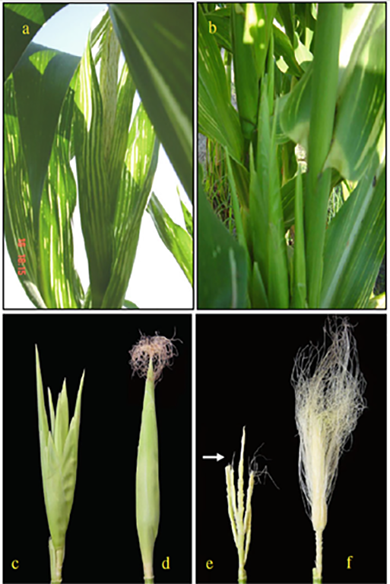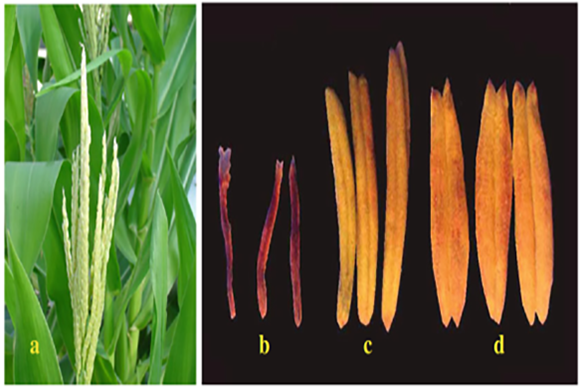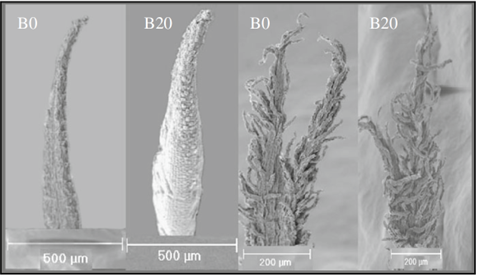Authors:
- Abigail Jiang, Agronomist, China
- Fabiano Silvestrin, Principal Advisor, Global Market Development Agriculture
- Eduardo Saldanha, Agriculture Development Specialist, Latin America
Corn is the most widely distributed and productive cereal crop among all cereal grain crops in the world. Together with rice and wheat, maize provides around 35% of the food calories to at least 4.5 billion people in 94 developing countries. Corn is a crucial component of animal feed and is also widely utilized in the manufacture of industrial goods—including biofuels. Increasing global demand will call for higher and more stable maize production.
The importance of boron in corn crops
Boron (B) is an essential element required for all plant nutrition. Boron deficiency can cause many anatomical, biochemical, and physiological changes in crops. Adequate boron in plant nutrition is critical for achieving high yield and quality of crops. University researchers have found yield increases ranging from 9-26% in response to boron application across five continents.
Boron is necessary in the:
- Formation and germination of the pollen grain
- Formation of the pollen tube
- Processes linked to the biology of plant flowering that ensure the fertilization of flowers
The demand for boron is greater during the reproductive phases, compared to the vegetative growth phase. The reproductive phase is a critical moment and sensitive to nutrient deficiency. The formation of the pollen tube, germination, and viability of the pollen grains are severely impacted in low available boron situations which can result in incomplete pollination and fertilization as well as subsequent floral abortion. Boron supply at this stage enhances flower retention and fruit and seed development.
In corn crops, boron is necessary for:
- Stimulation of root and shoot development
- Tassel and silk formation and development
- Movement of sugars from leaves to ears
- Pollen germination
- Pollen tube growth and seed formation
- Better water use efficiency and drought tolerance
Barren cobs can be found in boron deficient corn due to poor grain-setting which is attributed to the silks being non receptive. While boron deficient corn does not always show significant symptoms at the vegetative stage, boron deficiency has major effects in the reproductive stage on both morphology and function of the male and female flowers. Researchers have demonstrated that boron deficiency can lead to symptoms such as tiny, shriveled anthers that were empty of pollen and had lengthwise streaks of white to transparent color. Deficiency can also produce small or abnormal ears with very short silk small tassels with some of their branches emerging dead that are multiple and abnormally shaped.
It was also revealed that the effect of boron deficiency on the female flower is more severe than on the male flower. The corn produces abnormal ears, where the silks were much shorter or fewer in numbers, thinner and collapsed internally. The effects of boron deficiency in reproductive stages will continue at maturity stage with a highly pronounced decrease in grain yield and the number of grains per ear.
Research has also shown that compared to other crops responsive to foliar boron application, corn in boron deficiency can be expected to be significantly enhanced directly onto the silk during anthesis.
How to solve boron deficiency in corn
U.S. Borax offers full boron nutrition solutions for corn from soil applied boron fertilizer (Granubor® and Fertibor®) and an economic foliar boron fertilizer (Solubor®).
- Granubor is the only pure, 100% water-soluble granular boron product on the market. Its unmatched solubility provides corn with a fully available and reliable source of boron throughout the growing season.
- Fertibor is a versatile and easy way to satisfy boron demands. Free flowing and 100% soluble, we designed this product for easy incorporation into solid, liquid, or suspension fertilizers. It’s also commonly used for direct soil application.
- Solubor offers maximum and rapid dispersion in liquid fertilizer formulations leads to better results used in anthesis of maize. It features the market's highest approved boron concentration and is 100% water soluble, giving plants full access to this essential micronutrient. This foliar boron product is available in easy-to-mix granules, which eliminate handling headaches and give you greater control and customization of your fertilizer formulation.
Figure 1. Symptoms of boron deficiency in corn

- (- Boron): Images a, b, c and e. Anthesis showing white stripes or transparent streaks on leaf lamina (a), multiple ears (b, c) and short silks (e: arrow, removed husk).
- (+ Boron): Images d and f. Normal earn (d), and ear after removal of husk (f).
Source: Figures 1, 2,3, 4, and Table 1 adapted from Lordkaew et al, 2010
Figure 2. Male inflorescences of corn: Effects of boron deficiency

- (- Boron): Small tassel (a), shrivelled anthers (b) and narrow thin anthers (c).
- (+ Boron): Plants with normal anthers (d)
Figure 3. Images of corn, showing a silk from the upper

- (- Boron): B0
- (+ Boron): B20
Figure 4. Effects of boron on grain set by reciprocal cross in corn

- (- Boron): (b) B0♀ x B0♂; (c) B20♀ x B0♂; (d) B0♀ x B20♂
- (+ Boron): (a) B20♀ x B20♂
Table 1. Number of grains obtained by manual cross pollination of pollen and silk from maize plants. Grown in sand culture with boron (+B) and without boron (-B) added to the nutrition solution.
| Cross-pollination |
Grain number (plant -1) |
Grain set (%) |
| Silka | Pollena |
|
|
| (+B) (+B) |
452 |
100 |
| (+B) (-B) |
169 |
37.4 |
| (-B) (+B) |
2 |
0.4 |
| (-B) (-B) |
0 |
0.0 |
Silk a or pollen a of plants grown with boron (+B) and without boron (-B) added to the nutrient solution
Resources
References
- Kappes, C. 2023. Doses de boro na cultura da soja em Mato Grosso. Relatório Técnico de Pesquisa. U.S Borax | Rio Tinto (não publicado).
- Lordkaew S, Dell B, Jamjod S, et al. 2011. Boron deficiency in maize. Plant Soil 342:207-220.
- Marschner H (ed.). 2011. Marschner's mineral nutrition of higher plants. Third edition. Academic press.
- Matoh T. 1997. Boron in Plant Cell Walls. Plant and Soil, v. 193(1-2):59-70.